How to hide electrical wiring in the kitchen
 If you decide to make repairs in the kitchen or just moved into a new apartment, then this is the right time to distribute the wiring and consider how best to hide the various wires. Manufacturing companies that are engaged in the production of kitchens in rare cases suggest making a plan when measuring a wiring diagram that will correctly distribute the outlet points of outlets throughout the kitchen for private use, as well as for connecting equipment.
If you decide to make repairs in the kitchen or just moved into a new apartment, then this is the right time to distribute the wiring and consider how best to hide the various wires. Manufacturing companies that are engaged in the production of kitchens in rare cases suggest making a plan when measuring a wiring diagram that will correctly distribute the outlet points of outlets throughout the kitchen for private use, as well as for connecting equipment.
A large number of extension cords in the kitchen always spoil the attractiveness of the interior, and even more so interfere. A large number of extension cords in the kitchen always spoil the attractiveness of the interior, and even more so interfere. For this reason, you initially need to outline where the sockets will be. If you do not plan to transfer them in the future, then it is better to drown the electrical wiring in the wall, having drilled it. But not everyone has the opportunity to carry out this type of work. Consider other options to hide the wires ...
How to check the diode and thyristor. 3 easy ways
 Among home masters and craftsmen, the need periodically arises to determine the operability of a thyristor or triac, which are widely used in household appliances to change the speed of electric motor rotors, in power regulators of lighting devices, and in other devices.
Among home masters and craftsmen, the need periodically arises to determine the operability of a thyristor or triac, which are widely used in household appliances to change the speed of electric motor rotors, in power regulators of lighting devices, and in other devices.
Before describing the verification methods, we recall the thyristor device, which is not for nothing called a controlled diode. This means that both semiconductor elements have almost the same device and work in exactly the same way, except that the thyristor has a limitation - control through an additional electrode by passing an electric current through it.
The thyristor and the diode pass current in one direction, which in many designs of Soviet diodes is indicated by the direction of the angle of the triangle on the mnemonic symbol located directly on the case ...
How to calculate and assemble a transformer using the example of the "Moment" soldering iron
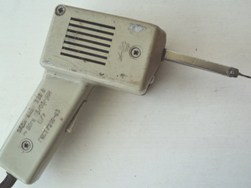 In the kit of the home master, you need to have a soldering iron, sometimes even several different capacities and designs. The industry produces many different models, they are not difficult to purchase. The photo shows a working sample of the release of the 80s.
In the kit of the home master, you need to have a soldering iron, sometimes even several different capacities and designs. The industry produces many different models, they are not difficult to purchase. The photo shows a working sample of the release of the 80s.
However, many craftsmen are interested in home-made designs. One of them at 80 watts is shown in the photo. This soldering iron was able to solder 2.5-square-square copper wires in the cold weather and to change transistors and other components of electronic circuits on printed circuit boards in the laboratory.
The “Moment” soldering iron is powered by an ~ 220 volt electric network, representing an ordinary transformer, in which the secondary winding is shorted by a copper jumper. When turned on for a few seconds, a short circuit current flows through it ...
About short circuit currents and its definition
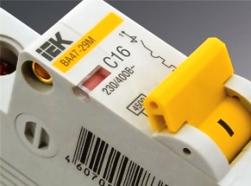 Knowing the magnitude of the short circuit current is essential to ensure fire safety. It is obvious that if the measured short-circuit current is less than the setting current of the maximum protection of the machine or 4 times the fuse current rating, the response time (fuse blowout) will be longer, and this, in turn, can lead to excessive heating of the wires and their a fire.
Knowing the magnitude of the short circuit current is essential to ensure fire safety. It is obvious that if the measured short-circuit current is less than the setting current of the maximum protection of the machine or 4 times the fuse current rating, the response time (fuse blowout) will be longer, and this, in turn, can lead to excessive heating of the wires and their a fire.
How to determine this current? There are special techniques and special instruments for this. Here we consider the question of how to do this, having only a multimeter or even a voltmeter. Obviously, this method does not have very high accuracy, but still sufficient to detect a mismatch between the overcurrent protection and the magnitude of this current.How to do it at home? It is necessary to take a sufficiently powerful receiver, for example, an electric kettle or an iron. It would be nice to have a tee ...
Such a familiar heater, and how many dangers: how to protect yourself from fire
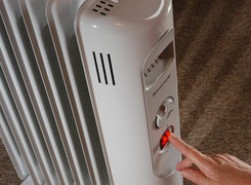 Memories of five years of living in a university dormitory (80s) are associated with constant cold inside the room before the start of the heating season. A small room for five students was drafted through the door and 2 windows, which were not particularly insulated from the glued paper.
Memories of five years of living in a university dormitory (80s) are associated with constant cold inside the room before the start of the heating season. A small room for five students was drafted through the door and 2 windows, which were not particularly insulated from the glued paper.
They were saved by a self-made electric "goat": on a two bricks a piece of asbestos pipe was placed, wrapped in a nichrome spiral from an electric stove. 2 meters of aluminum “noodle” were screwed to the ends of the wire and inserted into a socket through a plug. They used it only late in the evening - the commandant (severe retirement) "atrocities", severely punished everyone who found such structures.
We were lucky: they never fell under his arm, and most importantly - there were no electric injuries and burns. With age, he began to understand the commandant's anxiety, however, I can’t justify his actions ...
How to save electricity in an apartment and a private house
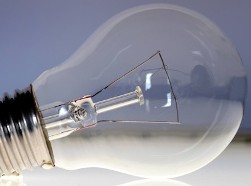 The People's Encyclopedia Wikipedia reveals the term “Saving” as a prudent, careful use of any resources. Applying it to electricity, it should be clarified that it is possible to reduce electricity charges: by putting things in order when using numerous electrical appliances without spending material resources, using new technologies that require initial financial investments, simply stealing electricity.
The People's Encyclopedia Wikipedia reveals the term “Saving” as a prudent, careful use of any resources. Applying it to electricity, it should be clarified that it is possible to reduce electricity charges: by putting things in order when using numerous electrical appliances without spending material resources, using new technologies that require initial financial investments, simply stealing electricity.
The method of theft involved people who have lost their conscience. They have developed many deceptive technologies. But this is not our topic at all, so we will consider in more detail the first two methods. In life, there are times when good intentions are not always justified, and the transition to energy-saving technologies is often accompanied by monetary costs. Recommendations for saving electricity in everyday life are well known, but not all people see the main sources of loss ...
How does the power of household appliances affect electrical wiring
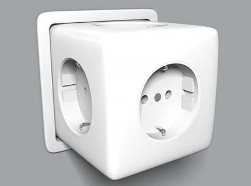 A young family with two children (4.5 years and 5 months) made an exchange and moved to a three-room apartment of a nine-story building built in the 80s from reinforced concrete panels with an elevator.
A young family with two children (4.5 years and 5 months) made an exchange and moved to a three-room apartment of a nine-story building built in the 80s from reinforced concrete panels with an elevator.
The electrical equipment of the apartment is made according to the TN-C scheme without a common ground loop and PE conductor. An entrance switchboard is installed in each entrance. From it, power cables diverge along the floor shields. On each floor there are 4 apartments of two blocks; right and left with a common corridor. It mounted apartment shields, which are powered by "aluminum noodles" 2.5 mm2. The same wires made all the wiring in the rooms.
The new owner is a home master who can not only hammer a nail, but also beautifully put expensive tiles, repair plumbing, connect a washing / dishwasher, find a malfunction ...
Proper use of putty fugenfueller
 Everyone knows that the fugenfueller is ideal for leveling walls, sealing joints of drywall sheets, filling various cracks and grooves in the walls, as well as sealing strobe when laying hidden electrical wiring.
Everyone knows that the fugenfueller is ideal for leveling walls, sealing joints of drywall sheets, filling various cracks and grooves in the walls, as well as sealing strobe when laying hidden electrical wiring.
Everyone knows that the surface of the walls before puttying must be cleaned of dust. But there are at least two mistakes that even experienced professionals make when using this wonderful material.
The first mistake is made when sealing large grooves and strobe with electric cables having a depth of 15-25 millimeters. Trying to save time, they close the stroba immediately to “zero”, filling the entire volume of the cable groove. When dried, the fugenfueller increases its volume and along the strobes there is a tubercle 2-3 mm high, which in a day to clean off is already very problematic.Since this putty material has a high hardness. Fill in groove...
